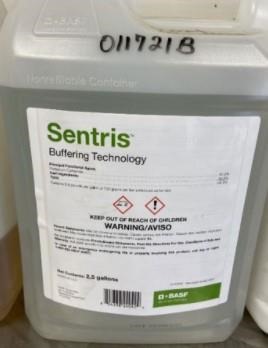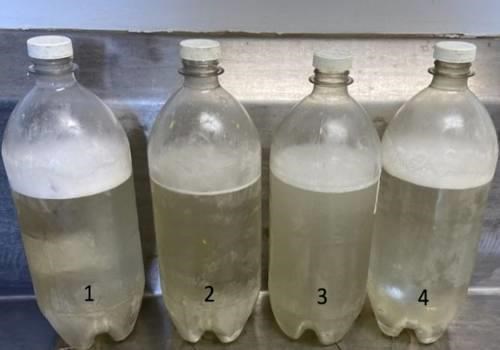By Haylee Schreier and Mandy D. Bish et.al
As a result of the 2021 updates to the labels of the approved dicamba products for use in Xtend and XtendFlex soybean, volatility reducing agents (VRAs) must now be added to the tank when spraying XtendiMax, Engenia, or Tavium.

Currently, two of the most common VRAs that are approved for applicator use are VaporGrip Xtra Agent and Sentris. These VRAs are a required addition due to their ability to adjust the pH of the spray solution to a level that reduces dicamba volatility, which is especially important when these products are applied in a tank-mix with Roundup. Other researchers have shown that the addition of Roundup in the tank can reduce the pH of the spray solution to 5 or lower, which can lead to increased volatility of dicamba. We have recently become aware that Sentris, a VRA released in 2021 from BASF, may have some tank-mix compatibility issues when mixed with glyphosate. According to an article by Dr. Tommy Butts at the University of Arkansas released this week, there are reports from applicators of extreme foaming and increased pressure in the tank when Sentris is included in a tank-mix of Engenia and Roundup PowerMax (Sentris and Glyphosate Tank-Mix Compatibility Problems). In additional tests they also found that Sentris and several other formulations of glyphosate caused a similar chemical reaction and buildup of pressure. However, without glyphosate in the mix, this reaction did not occur.
Table 1 Different chemicals and their rates used within the mixes tested.
| Chemical | rate |
| roundup Powermax (glyphosate) | 32 fl oz/acre |
| engenia (dicamba) | 12.8 fl oz/acre |
| sentris (VRA) | 8 fl oz/acre |
| NIS (Non-ionic surfactant) | 0.25 % V/V |
| On-target (Drift control agent) | 16 fl oz/acre |
We decided to conduct a small test of our own once we heard of these potential problems. Table 1 shows the products and application rates we evaluated in the tank-mix, and we evaluated these products in a variety of different mixing order configurations. The mixing order did not impact any of the results as far as we could see. The pH of our water in this mix was 7.57. Figure 1 shows the four different tank mixes approximately ten minutes after they were made. You can see that there are slight differences in foam but we did not observe any major differences in the pressure within the bottles. Although we do not know exactly why our results differ from what others have seen, it may be related to the spray solution pH, tank-mix partners, or perhaps even the different lot numbers of Sentris used. Even though we did not see the pressure issues that others have reported, it is important to understand that several other weed scientists have replicated this problem and therefore we feel it is important for Missouri applicators to be aware of these potential issues as we approach the time when we will be making post-emergence herbicide applications to XtendFlex soybean throughout the state.

Figure 1 From left to right, the mixes and mixing orders are listed accordingly: 1) Roundup Powermax, Engenia, Sentris; 2) Sentris, Engenia, Roundup Powermax, NIS; 3) Sentris, Roundup Powermax, Engenia, OnTarget; 4) Sentris, Roundup Powermax, Engenia.
Source : missouri.edu